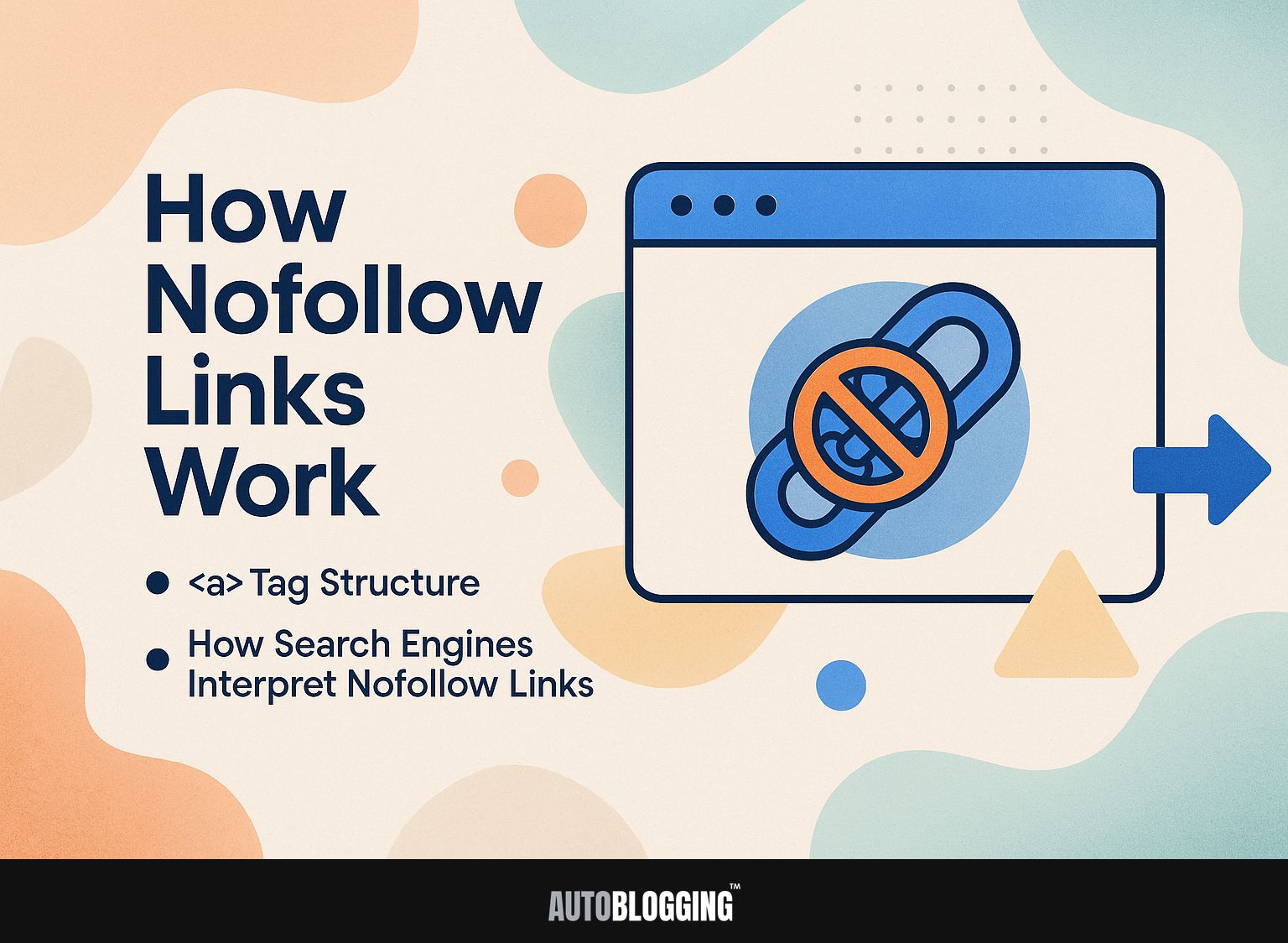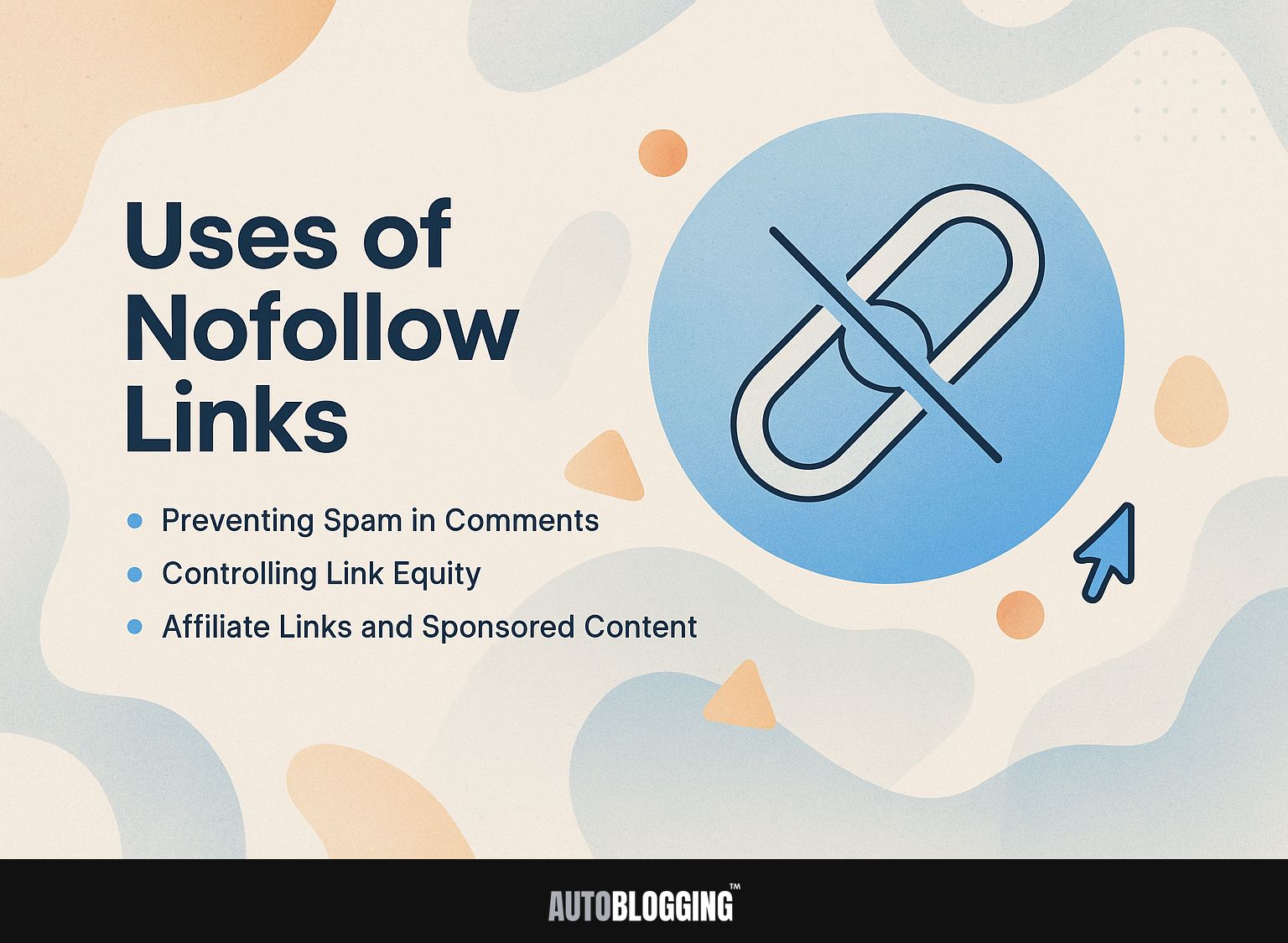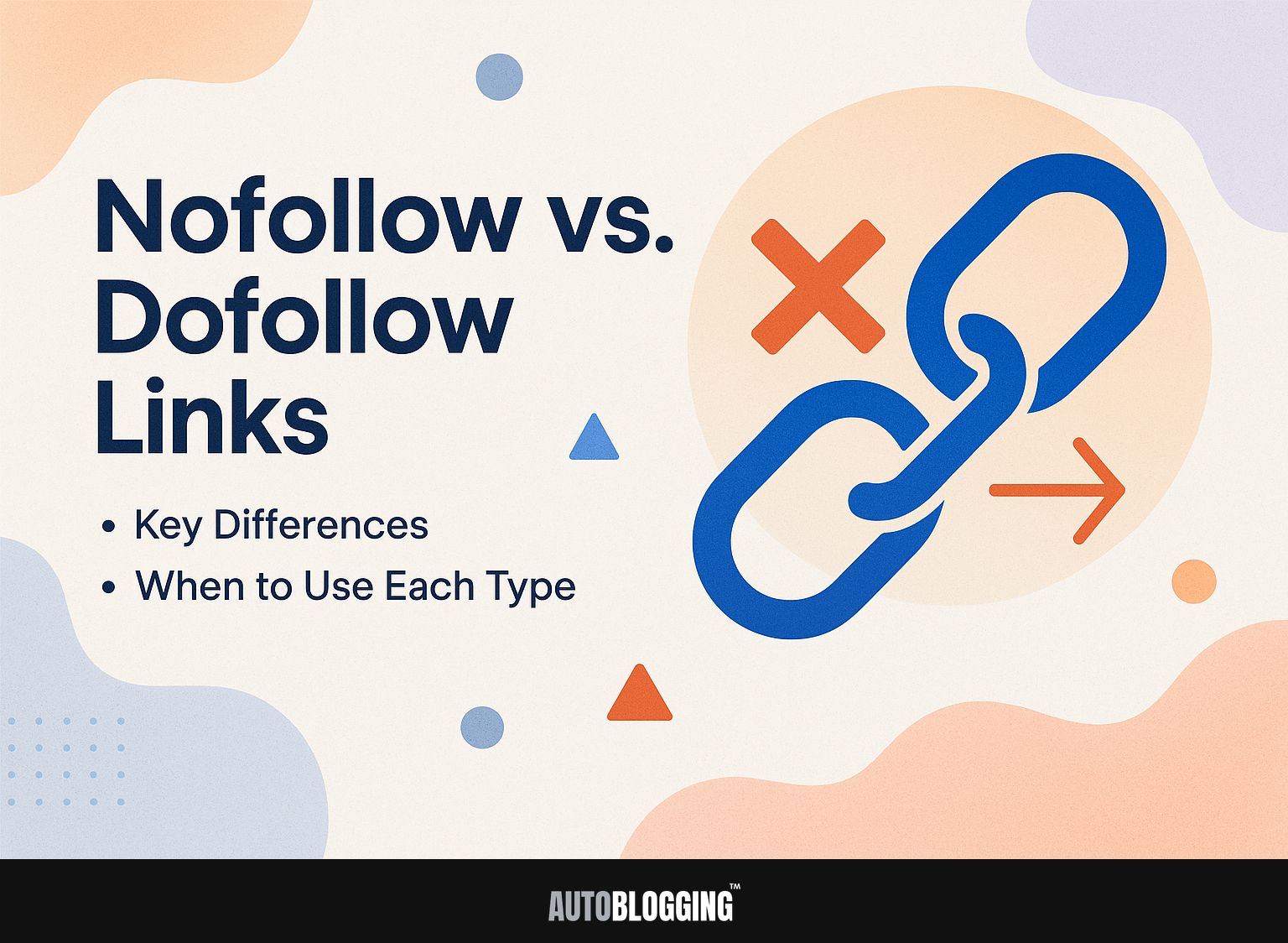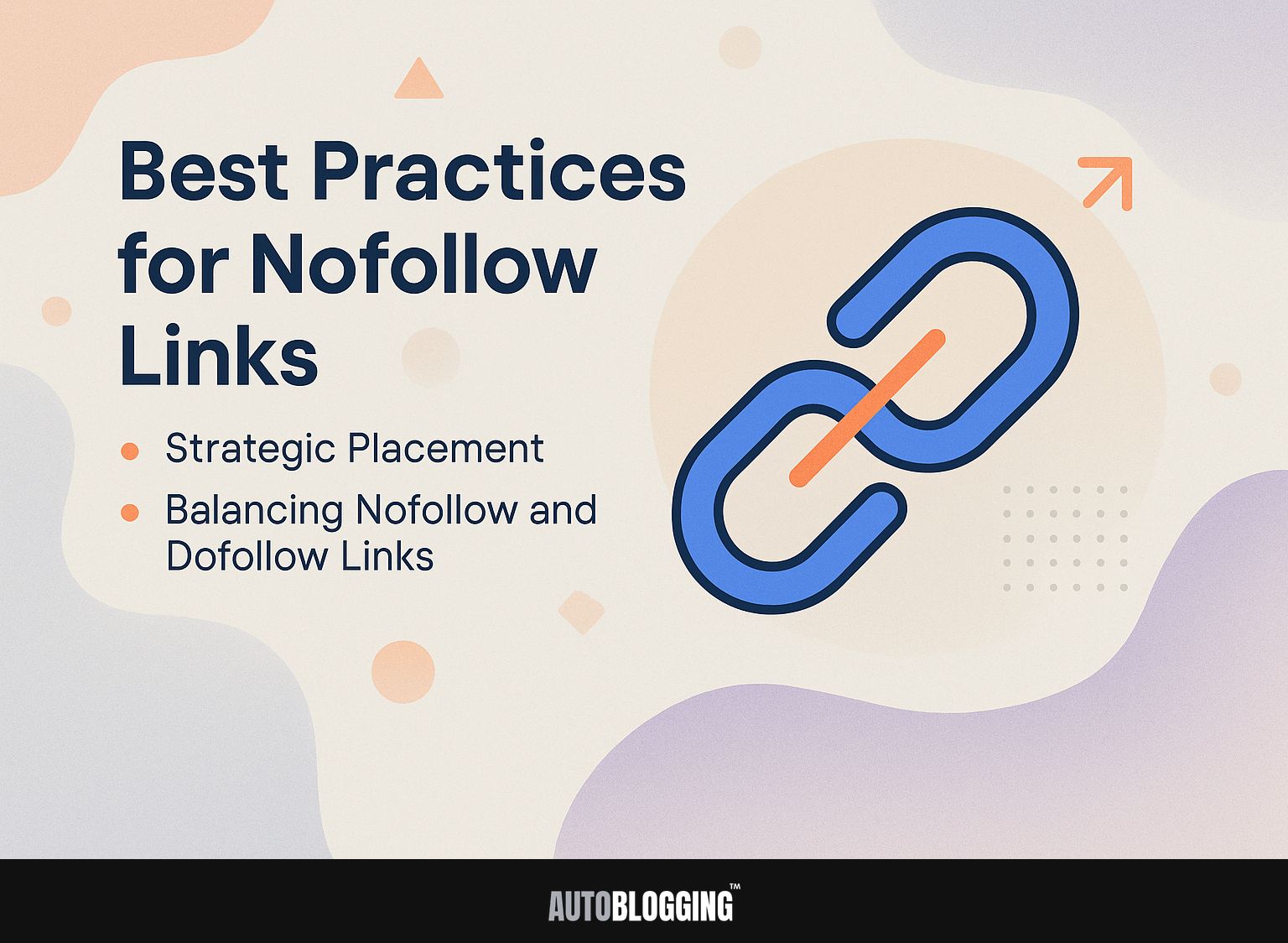Nofollow links are important for your backlink profile and can greatly affect your website traffic. According to Google, these links do not affect SEO authority, which makes their effect on Google ranking different. In this article, we’ll explain what nofollow links are, how they are used, and how they can impact your SEO strategy. Learn how to use them effectively for a balanced method in your link-building efforts.
Key Takeaways:
- A nofollow link is a type of HTML tag used to prevent search engines from following and indexing a link, and it can be used to control link equity and reduce spam in comments.
- Nofollow links have a direct impact on page rank and crawling/indexing, as they do not pass on link juice or authority to the linked page.
- Strategic placement and a balance of nofollow and dofollow links are key to effectively utilizing nofollow links and avoiding common misconceptions about their SEO value.
Contents
1. Definition of Nofollow Links
Nofollow links are HTML attributes added to hyperlinks, signaling search engines like Google not to pass link authority or ‘link juice’. These links are important for maintaining a healthy link profile, especially for user-generated content.
For example, you can implement a nofollow tag in your HTML as follows:
This method stops spam links from improving your site’s SEO while still letting you include useful resources or partnerships.
Nofollow links are often used in blog comments, paid advertising, and guest posts to manage credibility without sacrificing user experience.
2. History of Nofollow Links
Google introduced nofollow links in 2005 to fight spam in blog comments and promote a better link environment.
Initially, nofollow links aimed to prevent spam bots from gaining SEO advantages through comment links. Over time, Google recognized that many low-quality websites manipulated these links, often leading to poor user experiences.
As a response, the search engine evolved its approach, integrating nofollow attributes within its overall link evaluation criteria. Currently, nofollow links are considered by Google as suggestions rather than firm rules. This influences site rankings and helps improve the criteria for a quality link.
How Nofollow Links Work
Learning how nofollow links work is important for website owners who want to improve their backlink profile and make their site more visible in search results.
1. HTML Tag Structure
A nofollow link is simple: it has the ‘rel=nofollow’ attribute inside the anchor tag, like this: link text. To implement a nofollow link in HTML, simply add the attribute within your anchor (“a”) tag. For example,
This tells search engines not to pass link equity to the linked page, which is particularly useful for user-generated content or in comments to prevent spam.
Best practices suggest using nofollow links for:
- Paid advertising
- Affiliate links
- Any third-party endorsements where you don’t want to vouch for the destination site
Always prioritize user experience by ensuring that the links you do endorse are trustworthy and relevant.
2. How Search Engines Interpret Nofollow Links
Search engines like Google treat nofollow links differently; they do not contribute to PageRank calculations, thus affecting how links are valued.
Even though nofollow links don’t directly improve your site’s ranking, they still help increase traffic and build trust.
For instance, reputable sites using nofollow for user-generated content prevent spam while preserving content quality.
Website owners should focus on acquiring dofollow links through genuine outreach and creating shareable content.
Tools like Ahrefs can help identify potential backlink opportunities, ensuring a diverse link profile that balances both nofollow and dofollow links. This helps create a stronger SEO plan.
Uses of Nofollow Links
Nofollow links help website owners control their links and improve the experience for visitors.
1. Preventing Spam in Comments
By applying nofollow attributes to links in blog comments, website owners can deter spam and maintain the integrity of their comment sections.
This approach works well alongside tools like Akismet, which automatically filters out spam comments based on learned patterns. When enabled, Akismet reviews each comment, blocking those that meet certain criteria, thus reducing the manual moderation burden.
Implementing user verification methods, such as email confirmation or CAPTCHA, can further minimize spam. Together, these strategies create a more engaging and trustworthy comment environment, encouraging genuine interactions while protecting your site’s reputation.
2. Controlling Link Equity
Nofollow links let website owners control which links affect their site’s SEO, ensuring that only significant links are included.
Using nofollow links can be particularly beneficial in specific scenarios. For example, when linking to paid advertisements, user-generated content, or less reputable sources, implementing a nofollow tag helps prevent diminishing your site’s authority.
If you are linking to external resources you do not fully endorse or trust, nofollow links mitigate the risk of passing on unwanted link equity.
To implement nofollow links, simply add the rel=”nofollow” attribute in your HTML tags. This simple practice plays a significant role in preserving your website’s SEO integrity.
3. Affiliate Links and Sponsored Content
Nofollow links are essential for affiliate links and sponsored content, ensuring compliance with Google’s guidelines while protecting the website’s SEO value.
Using nofollow links is important for following SEO rules and staying within legal guidelines. For instance, the FTC requires transparency in endorsements; failing to use these may lead to penalties.
A case study involving a popular food blogger illustrated this point: after implementing nofollow tags on sponsored posts, her overall site traffic improved as she maintained trust with her audience.
Tools like Yoast SEO can set nofollow tags by themselves, simplifying the task. Always remember, compliance helps build long-term reader loyalty.
SEO Impact of Nofollow Links
The role of nofollow links in SEO can be important, affecting search result positions, visitor numbers, and the general quality of a website’s backlink profile.
1. Effects on Page Rank
Nofollow links do not affect PageRank, meaning they won’t directly improve a site’s rank in search engines, but they can affect visibility metrics.
Although they don’t pass link equity, nofollow links can still drive significant traffic. For instance, placing a nofollow link on a popular blog or social media post may attract users who are genuinely interested in your content.
These links can increase your brand’s visibility and reputation, especially when included with well-known sources. Tools like SEMrush or Ahrefs can help track the performance of your nofollow links, showing how they affect referral traffic and site engagement over time.
Using nofollow links is a good approach within a varied link-building plan.
2. Influence on Crawling and Indexing
Nofollow links inform search engines not to crawl certain links, which can impact how a website’s content is indexed and ranked. This strategy can be particularly useful in managing link equity.
For instance, if you’re linking to untrusted sites or user-generated content, applying the nofollow attribute helps prevent passing authority to those links. Forums and blog comments often benefit from nofollow links to reduce spam.
Using too many nofollow links may hinder your site’s overall SEO performance if critical internal links are marked as such, so it’s essential to strike a balance.
In practice, consider applying nofollow to affiliate links or paid advertisements to maintain a healthy link profile.
3. Link Juice and Authority Distribution
Nofollow links do not transfer authority, which is important to know when managing links to distribute authority effectively.
To maintain a healthy balance, aim for a ratio of about 70% dofollow to 30% nofollow links. Use tools like Moz or Ahrefs to examine your link profile and find parts that can be better.
For example, adding reputable nofollow links to social media or user-generated content can prevent spammy practices while enhancing trust. Check your site’s performance data often to see how well your link strategy is working. Change it as needed to fit your SEO goals and how your audience interacts.
Nofollow vs. Dofollow Links
Understanding the difference between nofollow and dofollow links is important for creating an SEO plan that follows Google’s rules.
1. Key Differences
The primary difference between nofollow and dofollow links lies in how they share link authority; dofollow passes link juice, while nofollow does not.
Nofollow links, indicated by the rel=”nofollow” attribute, are typically used in scenarios where the site owner wants to avoid endorsing the linked content, such as in user-generated content or sponsored links. This means that search engines won’t pass authority to those links, which can protect your site’s ranking.
They still offer value in driving traffic. In contrast, dofollow links contribute positively to SEO, enhancing the site’s authority and potentially improving its ranking in search results.
Choosing between the two depends on your strategy: use dofollow for high-quality, relevant sites and nofollow for less trusted sources.
2. When to Use Each Type
Knowing when to use nofollow or dofollow links is important for boosting a website’s SEO approach and adhering to recommended practices. Dofollow links allow search engines to follow them, passing on authority and ranking benefits.
Ideal scenarios for using dofollow links include linking to your own authoritative content or reputable sites within your niche.
On the other hand, nofollow links should be used when linking to untrusted sources, paid advertisements, or user-generated content, preventing the passage of authority.
For instance, use nofollow for blog comments or affiliate links while reserving dofollow for trusted partnerships or original content sources. This strategic method builds trust for your site and keeps its SEO reliable.
Best Practices for Nofollow Links
Using best practices for nofollow links can improve a website’s SEO and keep a good link profile without penalties.
1. Strategic Placement
Using nofollow links in specific areas, such as comment sections and ads, can improve their impact and follow SEO guidelines. To implement nofollow links effectively, consider a few strategies.
For example, in blog comments, adding nofollow attributes can reduce spam while maintaining a clean link profile. Similarly, use nofollow links in affiliate promotions to follow search engine rules.
A successful example involved a specialized blog that used nofollow links in their resource pages. This method increased user confidence and engagement without compromising the site’s reliability.
Tools like Yoast SEO help control these features in your content, ensuring you’re enhancing your site in an organized manner.
2. Balancing Nofollow and Dofollow Links
Keeping a good mix of nofollow and dofollow links is important for improving link value and increasing search engine visibility.
To achieve this balance, first, assess your current link profile using tools like Google Search Console or SEMrush to identify the percentage of nofollow vs. dofollow links. A good ratio often hovers around 70% dofollow and 30% nofollow.
Next, review your outgoing links; prioritize authoritative sites for dofollow links and apply nofollow attributes to less reliable sources. Regular checks will maintain this ratio, improve your site’s reliability, and avoid possible penalties from search engines.
Common Misconceptions about Nofollow Links
Although they matter, people often get confused about nofollow links and how they affect SEO.
1. Myths about SEO Value
A common misconception is that nofollow links have no value. In fact, they can bring in referral traffic and increase online visibility without passing on link authority.
Nofollow links have key roles in SEO. For example, they increase visits from popular sites because people frequently click to check out sources.
Using nofollow links can improve your site’s credibility by associating it with authoritative domains. Tools like Google Search Console allow you to monitor traffic from these links, helping you understand their impact.
Using nofollow links in your content can improve your SEO plan by adding variety to your backlink profile and strengthening your online presence.
2. Understanding Link Relationships
Knowing how nofollow and dofollow links work is important for creating a link profile that follows Google’s rules.
Dofollow links transfer authority from one site to another and can improve your site’s SEO if they come from well-regarded domains. Getting links from well-known blogs or news sites can greatly increase your credibility.
On the other hand, nofollow links don’t transfer authority, but they help make your link profile look more natural. These links can come from forums, social media platforms, or comments sections, where user engagement is common.
Balancing these link types helps create a strong SEO plan that builds authority and encourages natural growth.
3. Summary of Key Points
Key points regarding nofollow links include their role in preventing spam, controlling link equity, and the necessity of strategic placements in SEO. Nofollow links stop unwanted transfer of page authority, helping to keep a clean backlink profile.
For instance, major platforms like WordPress and Blogger typically use nofollow attributes on comment sections to combat spam.
Strategic implementations might include using nofollow on links to untrusted sites or paid advertisements, ensuring your SEO efforts remain focused.
To improve your strategy, regularly check your link placements using tools like Ahrefs or SEMrush. These tools can help find new ways to improve your link-building tactics.
Frequently Asked Questions
1. What is a Nofollow Link?
A Nofollow link is a type of hyperlink used on websites that tells search engines not to follow the link, therefore not passing any SEO value to the linked website. The attribute rel=”nofollow” is added to the link to indicate that it should not be crawled by search engines.
2. What is the Definition of a Nofollow Link?
The definition of a Nofollow link is a link with the rel=”nofollow” attribute that instructs search engines not to follow the link and not to pass any SEO value to the linked website. This was originally created to combat spam and prevent search engines from giving too much weight to paid or low-quality links.
3. What are the Uses of Nofollow Links?
Nofollow links are commonly used for sponsored or paid links, comments on blogs or forums, and user-generated content that may not be reliable or trustworthy. They can also be used for links to potentially harmful or irrelevant websites. Nofollow links are also used to indicate that a website does not endorse the linked content.
4. How Does a Nofollow Link Impact SEO?
A Nofollow link does not have any direct impact on SEO as it does not pass any SEO value to the linked website. However, it can indirectly affect SEO by stopping search engines from exploring and listing the linked website, which can lower its search rankings. Using both Nofollow and Dofollow links can seem more natural to search engines and help with SEO.
5. Should I Use Nofollow Links on My Website?
The use of Nofollow links depends on the purpose and context of your website. If you are linking to paid or sponsored content, user-generated content, or potentially harmful websites, it is recommended to use Nofollow links. But if your website connects to trustworthy and related sources, Dofollow links can help improve SEO.
6. Can Nofollow Links Help with Search Engine Rankings?
Nofollow links themselves do not directly impact search engine rankings, but they can indirectly affect them by helping to maintain a balanced link profile and preventing any penalties for spammy or low-quality links. Nofollow links can also bring in referral traffic and increase brand awareness, which can indirectly benefit SEO.









